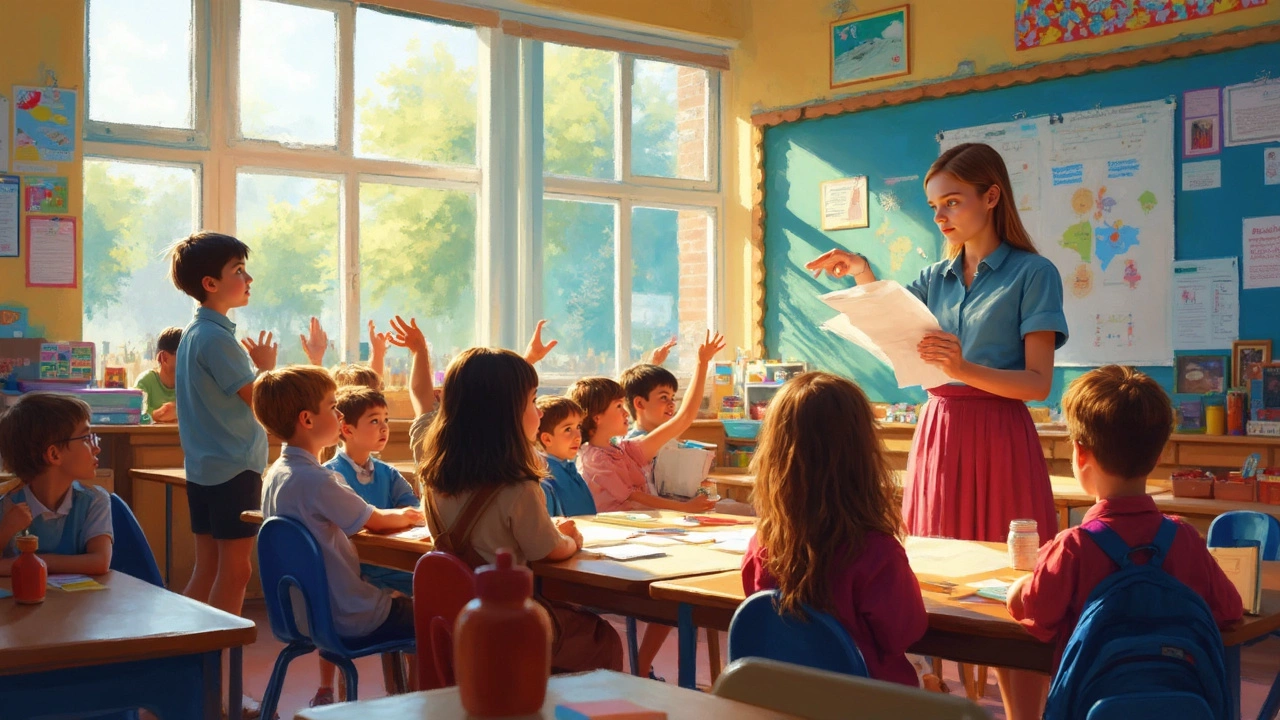Effective Teaching Strategies Every Nursery Teacher Should Know
If you’re a nursery teacher, you already know that kids learn best when they’re having fun. But fun alone isn’t enough – you need clear, purposeful strategies that turn play into growth. Below are three easy‑to‑apply approaches that work in any early childhood setting.
1. Play‑Based Learning with Clear Goals
Children love games, blocks, and pretend play. The secret is to give those activities a learning target. For example, set up a "grocery store" corner and ask kids to count the apples they sell. While they sort, you’re building number sense, language, and social skills. Keep the goal simple – one skill per activity – so the focus stays sharp.
To make it smooth, write the goal on a sticky note and place it where the kids can see it. When the play ends, gather everyone for a quick reflection: "What did we count? How did we share the money?" This short talk cements the learning without breaking the fun.
2. Visual Schedules and Routine Cues
Young learners thrive on predictability. A visual schedule shows what’s coming next – circle time, snack, outdoor play – with pictures they can point to. When a child knows the next activity, anxiety drops and attention rises. Use bright icons and keep the board at eye level.
Add a "transition cue" like a gentle chime or a short song. When the cue sounds, kids automatically start cleaning up or moving to the next spot. This tiny habit saves you minutes of shouting and gives children a sense of control.
3. Question‑Driven Exploration
Instead of lecturing, spark curiosity with open‑ended questions. Swap "Did you enjoy the story?" for "What would happen if the turtle met a rabbit?" This prompts children to think, talk, and imagine. Allow a few moments for silent thinking; then let the little ones share their ideas.
Record the best answers on a chart. Watching their thoughts grow on paper boosts confidence and shows them that their ideas matter. Over time, you’ll notice richer vocabulary and stronger reasoning skills.
Putting these strategies together creates a classroom where play, routine, and curiosity reinforce each other. Start with one change – maybe the visual schedule – and watch how quickly the room settles. Then add a play‑based activity with a clear goal, and finish with a daily question round. You’ll see higher engagement, smoother transitions, and deeper learning without adding extra workload.
Remember, the best teaching style is the one that fits your kids’ personalities. Test each idea, tweak it, and keep the focus on what makes learning feel natural for young minds. Your nursery will become a place where kids love to discover, and you’ll feel the satisfaction of watching real progress every day.
Student Teacher Training: Insightful Guide for Future Educators
Student teacher training is a vital phase for budding educators, blending theory with real-world classroom experience. This process equips future teachers with practical skills, classroom management techniques, and teaching strategies that can't be learned from books alone. In this training, students get a chance to practice, observe, and refine their teaching styles under the mentorship of experienced educators. Understanding the intricacies of preparing effective lesson plans and engaging students in diverse classroom settings is central to this training. The experience significantly impacts their career trajectories by building confidence and competence.
